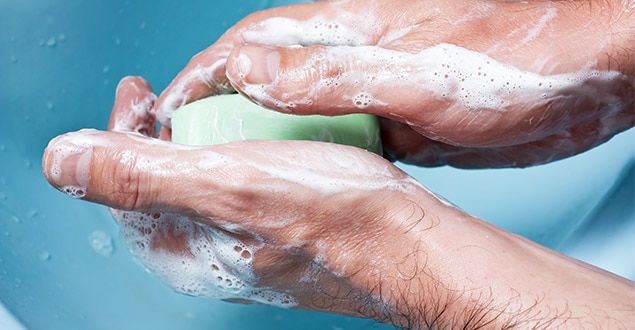Vicki: When you’re using catheterization, you have to have good personal hygiene and that just means washing my hands before I start. I use wipes or I try to at least have some time when I've had a shower, that makes it easier and quicker, because I don't have to go through as many steps.

There are a number of precautions that might help you prevent recurring urinary tract infections.
Get enough fluids
Every person needs daily fluids to maintain their health - drinking 6-8 glasses of fluids each day is the usual recommended amount, but it is not for everyone. You should first consult with your healthcare provider to determine the amount that is best for you based on your individual medical condition(s).
Beverages containing caffeine (cola, coffee, tea and some energy drinks) and artificial sweeteners are known bladder irritants and may need to be kept to a minimum.
Why?
Drinking lots of water dilutes the urine and flushes bacteria out of the bladder. If you regularly empty your bladder as directed by your healthcare provider, you may remove urine with potential bacteria each time you catheterize. Make sure you drain the bladder completely each time.
Maintain good personal hygiene
Always wash your hands thoroughly – especially before you use your intermittent catheter. Also, carefully clean around the urethral opening before inserting the catheter.
Why?
Bacteria from improper hand washing, or bacteria near the urethral opening, can be introduced into the urinary tract when using a catheter.
Regularly empty your bladder completely as prescribed by your healthcare provider.
Maintaining your catheterization schedule may help in the prevention of urinary tract infections.
Why?
Staying on a regular schedule and emptying your bladder completely with intermittent catheterization, reduces the amount of urine sitting in the bladder and the time that urine is left to sit stagnant in your bladder. Each time you catheterize you remove urine in the bladder along with any bacteria that may be present.
Use a sterile catheter every time you catheterize.
Use a new, sterile, well-lubricated (hydrophilic coated or pre-lubricated) catheter, time you catheterize to lessen friction as you insert and remove your catheter. The amount of catheters you are allowed each month under your insurance plan may vary according to your individual benefit under your healthcare plan.
Why?
A well-lubricated, (hydrophilic coated or pre-lubricated) catheter may make the process more comfortable and may lessen the friction during insertion and withdrawal of the catheter.
Tip: Every once in a while, measure the amount of urine you empty. The goal is to keep the catheterized urine at a volume (400ml) which avoids overstretching the bladder and prevents leaking. If you empty more than this amount, ask your healthcare provider if you need to use intermittent catheterization more often.

Other advice
Maintain a good bowel regime and avoid constipation.
- Some people may benefit from drinking cranberry juice or taking cranberry extract tablets, but there is no clear proof of efficacy. Always ask your healthcare provider before you take any supplements to make sure it doesn’t interact with any of your medications.
- If you have recurring infections drink fluids as you have been directed, but try to eliminate known bladder irritants such as caffeinated drinks (coffee, soft drinks and energy drinks as well as artificial sweeteners to see if it helps as these items can cause irritation to the urethra.
If you - despite all these precautions - still suffer from frequent UTIs, talk to your healthcare provider. Women have a higher risk for UTI. Read the extra precautions for women.
These are general guidelines meant to help you with typical questions. You should follow the specific instructions provided by your healthcare provider and the intermittent catheterization solution you are using.



